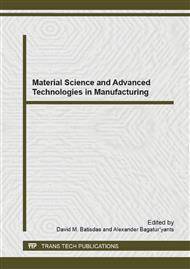p.127
p.132
p.137
p.142
p.147
p.153
p.157
p.163
p.168
The Impact on the Polypropylene Matrix Composites by the Cutting Size of the Automotive Interior Decoration Scrap
Abstract:
in this paper, the automotive interior decoration scrap (FRTPP) have been successfully cut in to certain size tiny lumps via self-designed fully enclosed mechanical shred device. Then this lumps were filled in to the PP with additives by the double screw extrusion. The influences of the lumps sizes on the micro-structures , thermal stability,processing fluidity and mechanical properties of the as-fabricated composites have been systematically investigated. Otherwise the morphology changes of polyester fabric attached to the surface of leftover materials have been investigated at different temperature. The results shows that: the different size lumps were homogenously dispersed in the polymer; The thermal stability and fluidity of composite made by 10mm×10mm lumps is the best. The tensile strength of the product by 15mm×15mm increased by 10% while notched impact strength increased by 22%; The polyester fabric remains fiber structure at the processing temperature (190°C-210°C) and can be used as reinforcements for pp.
Info:
Periodical:
Pages:
147-152
Citation:
Online since:
January 2014
Authors:
Price:
Сopyright:
© 2014 Trans Tech Publications Ltd. All Rights Reserved
Share:
Citation:


